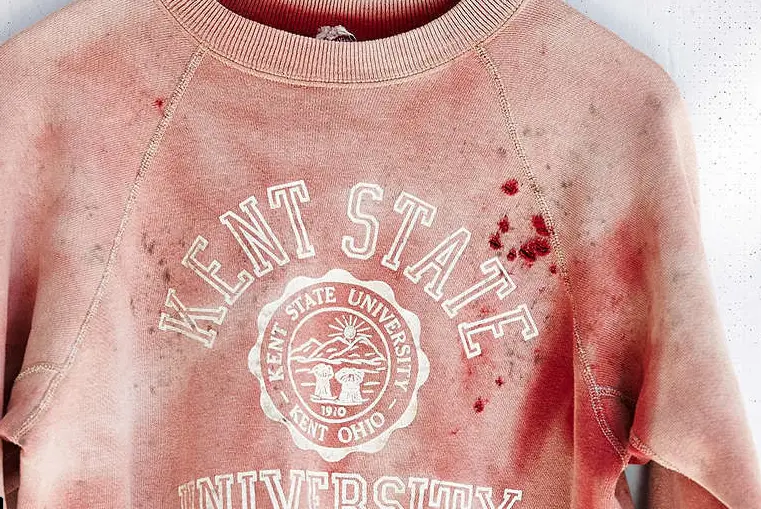Moving Past Urban Outfitters
The store, and its sister stores, don’t deserve your business. Here’s where to shop instead.
By Maya Merberg, SUNY Geneseo
Upon entering Urban Outfitter’s website, one is greeted with the slogan, “Always open, always awesome.”
In reality, the physical store closes at 10:00, and the brand as a whole falls short of awesome more often than not. You might know Urban Outfitters as the store everyone on your Twitter feed was shitting on for selling clothes that looked like Nazi propaganda, or for their several instances of cultural appropriation, or for encouraging eating disorders. If not, you’ll recognize it as the store you avoid because they sell items like simple white t-shirts for $90. Despite outrageous prices, Urban Outfitters’ products are of average quality. And though they can be unique and stylish, they miss the mark at times.
The store has received a lot of flak over the past few years for its cultural insensitivity. After learning about these poor practices, I’ve tried to refrain from purchasing from them to avoid supporting a socially irresponsible company. I know others who have done the same. The generation that Urban Outfitter markets to is particularly aware of social justice issues, so you would think that if enough shoppers boycotted the business that it would influence the company’s bottom-line They even seem to cater to a particularly left wing crowd, who might presumably be even more inclined toward socially equity. Take, for example, this failed attempt at pandering:
 Well, they’re not wrong.
Well, they’re not wrong.
Amazingly, while similar retailers that have received much less bad press are not doing too well right now, Urban Outfitters is expanding. The NASDAQ reasons that this is because the company excels at online sales and creates an inviting store atmosphere. But the online store is really just like any other, and the reason competitors are doing poorly in the first place is because of decreased foot traffic in shopping areas, so in-store atmosphere wouldn’t play a significant role in changing that. Sure, the stores do have unique interior designs, but who’s going to needlessly leave their house just because they want to go to a store that feels like a wooden labyrinth with some haphazardly places beanbags?
I would argue that a big part of Urban Outfitters growth is their marketing. Many people probably don’t realize that the brand URBN whose main store is Urban Outfitters is also comprised of Anthropologie and Free People. Anthropologie sells clothing and décor that’s aimed at older women, and Free People has more of a hippie and festival vibe. Any connection among these stores seems to be concealed from customers, but in reality they are essentially just different product lines owned by the same brand. Of course, the face behind the brand is a white, male middle-aged billionaire who is rumored to have donated thousands of dollars to Rick Santorum.
People who shop at these stores might think they’re avoiding the controversy of Urban Outfitters, but they are actually feeding money into it. They may not have even heard of the store, since Anthropologie especially targets such a different customer base. Other stores, like Aerie, are clearly linked to their parent brands (American Eagle in this case), offering interchangeable coupons and promotions, etc. I wouldn’t be surprised if URBN distanced their lines from each other intentionally to prevent Urban Outfitter’s increasingly bad reputation from affecting sales at their other stores.
I actually used to really like a lot of Urban Outfitter’s products. Unfortunately, there is something in their aesthetic that appeals to me regardless of how much I hate what they stand for.
For consumers who like the look of Urban Outfitters but want to shop at more considerate and honest companies, there are plenty to choose from. American Apparel is pretty similar, and similarly pricy, but all their clothes are made in America (you’ll be shocked to learn). AA also filed for bankruptcy recently, so I would advise shopping for what you need while you still can.
The lower-end but still trendy H&M is becoming more environmentally friendly and is also working to improve labor conditions in its overseas factories. These kinds of sweatshops are plagued by horrible conditions that would be illegal in the U.S., but most retailers don’t do much to fix it. Finally, Tradesy is a fairly new online consignment shop where you can buy designer items for way less than they would otherwise be. Urban Outfitters has a kind of pseudo-thrift shop vibe, so why not go with the real thing instead? This way you can save money, be more eco-friendly, and not inadvertently support an insidious money-obsessed corporation.












